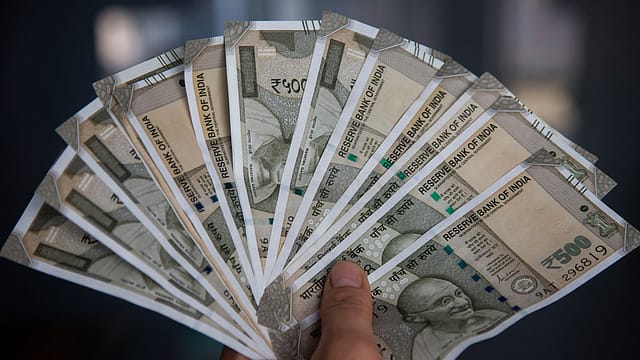Currency in circulation rises to ₹31.33 lakh cr from ₹13 lakh cr in 2014: Govt
ADVERTISEMENT

Finance minister Nirmala Sitharaman has said the value of the currency in circulation increased from ₹11.8 lakh crore in March 2013 to ₹31.3 lakh crore in March 2022. The currency (banknotes and coins) in circulation (CiC) and the ratio of CiC to GDP for FY13 was 12%, while it has increased to 13.7% as of FY22, the minister said in Parliament on Monday.
The currency in circulation stood at ₹13,00,200 crore as of March 2014, the year in which the Modi government had come to power, with a CiC-GDP ratio of 11.6%. The RBI's data on the volume and value of notes of circulation for the last 10 years shows the volume almost doubled from 7,351.7 crore to 13,053.2 crore, while the value increased from ₹11.6 lakh crore as of FY13 to ₹31.05 lakh crore. The increase in currency was seen despite the Modi government’s demonetisation drive in 2016, which was implemented to reduce the amount of relative cash in circulation in the country.
On its effect, the Union minister said the mission of the government is to move towards a "less cash economy" to reduce the generation and circulation of black money and to promote the digital economy. She said the objective behind demonetisation was to contain the "rising incidence of fake currency notes of the specified banknotes", which were largely in circulation. It was also aimed at limiting the usage of high denomination banknotes for storage of unaccounted wealth and to contain the rising level of using the fake currency for financing subversive activities like drug trafficking and terrorism.
December 2025
The annual Fortune 500 India list, the definitive compendium of corporate performance, is out. This year, the cumulative revenue of the Fortune 500 India companies has breached $2 trillion for the first time. Plus, find out which are the Best B-schools in India.
Sitharaman in December 2022 had said there has been a 9.86% increase in the value of the currency in circulation to ₹31,05,721 crore in 2022. Since the NDA government's demonetisation in 2016, the highest upsurge by 37.67% in value terms at ₹18.03 lakh crore on a year-on-year basis was seen in 2018, she added.
The RBI's annual report released in May 2022 also said the value and volume of banknotes in circulation increased by 9.9% and 5%, respectively, at ₹31,05,721 crore and ₹13.05 lakh in FY22. Comparatively, the increase in currency in circulation (both value and volume terms) was 16.8% and 7.2%, respectively, during 2020-21.
The rise in banknotes in circulation, despite the government's push for digital India and various reforms in the banking and fintech industry, was attributed to "the second wave of COVID-19 pandemic, which induced renewed restrictions on movement in various parts of the country”.
Meanwhile, on a separate question that the decline in the value of domestic currency during the last six months against the US Dollar and Euro minister of state for finance Pankaj Chaudhary said the Indian rupee touched an intraday low of ₹90.47 against the Euro on February 2, 2023, and closed the day at ₹90.39/euro.
He said the rupee came under depreciation pressure from March 2022 onwards as geo-political tensions worsened and US Federal Reserve began its monetary policy tightening, which led to a surge in crude oil prices and capital outflows from domestic financial markets as global financial market conditions tightened.
